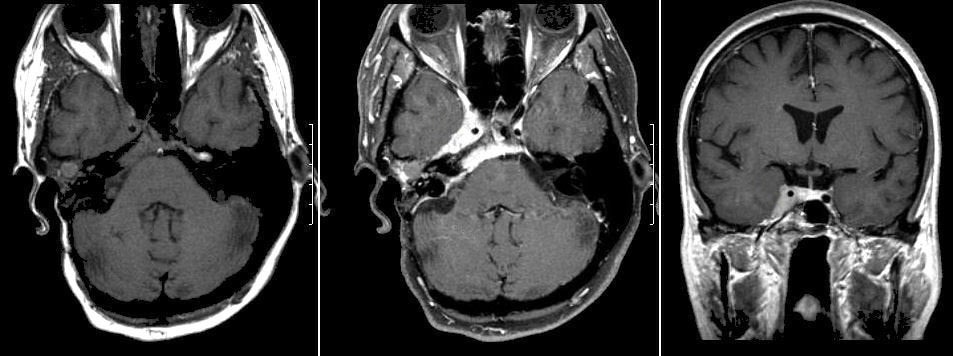
|
A 55 year-old woman presented with headaches and a right cranial nerve VI palsy. |

![]()
![]()
![]()
| Meningioma (Cavernous Sinus). (Left)
T1-weighted axial MRI; (Middle) T1-weighted with gadolinium axial
MRI; (Right) T1-weighted with gadolinium coronal MRI. Note the well
demarcated mass that is dural based, and arises from the region of the right cavernous sinus. The mass is isointense on T1-weighted
images but strongly
enhances with contrast. The flow void of the carotid artery is seen within the lesion.
Meningiomas are common tumors that arise from the meninges and can occur within the spinal canal as well as intracranially. They are typically benign histologically, and can be surgically resected if they are in an accessible location. They are more common in women than men, and account for approximately 20% of all primary brain tumors. Similar to low grade gliomas, they grow very slowly. They may result in seizures, focal neurological signs, or both, depending on their location. Some of the more common locations for meningiomas include: ● Parasagittal (attached to the falx) |
Revised
11/27/06.
Copyrighted 2006. David C Preston